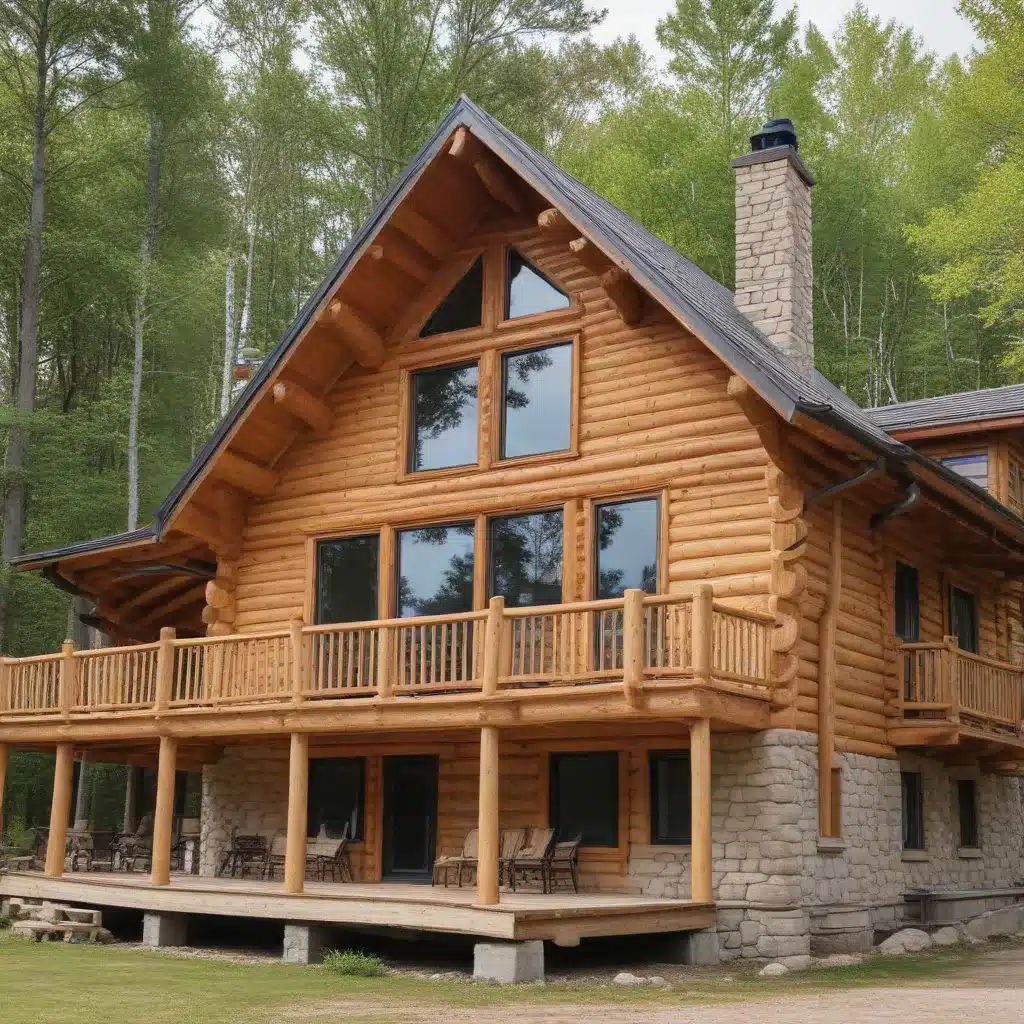
Embracing Sustainable Log Home Design
Building a log home is a fulfilling and rewarding experience, but it also comes with a unique set of challenges. As the demand for energy-efficient and eco-friendly living spaces continues to grow, homeowners and contractors are seeking innovative solutions to enhance the performance of existing log homes. In this comprehensive guide, we’ll explore the latest trends, best practices, and cost-effective strategies for optimizing energy efficiency through log home retrofits.
Mastering the Art of Log Home Construction
The construction of a log home requires a delicate balance of traditional craftsmanship and modern building techniques. Skilled log home builders meticulously select and prepare the timber, ensuring the logs are properly seasoned, treated, and joined to create a sturdy and long-lasting structure. This attention to detail is crucial for maintaining the structural integrity and thermal performance of the home.
One of the key factors in efficient log home construction is the choice of wood species. Cedar, pine, and douglas fir are popular options due to their natural resistance to rot, insect damage, and weathering. These materials not only contribute to the aesthetic appeal of the home but also play a vital role in its energy efficiency.
| Wood Species | Thermal Resistance (R-value) | Estimated Cost per Cubic Foot (USD) |
|---|---|---|
| Cedar | 1.41 per inch | $3.50 – $5.00 |
| Pine | 1.25 per inch | $2.50 – $4.00 |
| Douglas Fir | 1.33 per inch | $3.00 – $4.50 |
The thickness of the logs is another crucial factor in determining the thermal performance of a log home. Typically, log walls range from 6 to 12 inches in thickness, with thicker walls providing greater insulation value. However, the optimal thickness may vary depending on the local climate and the homeowner’s energy efficiency goals.
Enhancing Thermal Performance through Innovative Retrofits
While new log home construction offers opportunities to incorporate the latest energy-efficient technologies, existing log homes can also benefit from targeted retrofitting solutions. These upgrades can significantly improve the thermal performance of the structure, reducing energy consumption and utility costs.
One effective strategy is the installation of high-performance windows and doors. Replacing outdated, drafty units with modern, energy-efficient alternatives can make a significant impact on the overall thermal efficiency of the home. Look for windows and doors with low-emissivity (low-E) coatings, double or triple glazing, and improved weatherstripping to minimize air infiltration.
Insulating the log home’s envelope is another crucial step in improving energy efficiency. Applying a layer of rigid insulation, such as foam boards, to the exterior of the log walls can significantly enhance the R-value of the structure. This approach helps to mitigate heat transfer, keeping the indoor environment comfortable while reducing the demand on heating and cooling systems.
| Retrofit Measure | Estimated Cost (USD) | Potential Energy Savings |
|---|---|---|
| High-Performance Windows and Doors | $10,000 – $25,000 | 15% – 30% reduction in heating and cooling costs |
| Exterior Rigid Insulation | $5,000 – $15,000 | 10% – 20% reduction in heating and cooling costs |
| Improved Air Sealing | $2,000 – $5,000 | 5% – 15% reduction in heating and cooling costs |
In addition to upgrading the building envelope, log home owners can also consider investing in more energy-efficient heating, ventilation, and air conditioning (HVAC) systems. High-efficiency heat pumps, for example, can provide both heating and cooling while consuming less energy than traditional systems.
Harnessing Renewable Energy Solutions
Beyond the physical modifications to the log home, homeowners can also explore the integration of renewable energy technologies to further enhance their energy efficiency. Solar photovoltaic (PV) systems, for instance, can be installed to generate on-site electricity, reducing the reliance on the grid and lowering utility bills.
Wind turbines are another renewable energy option, particularly in regions with consistent wind patterns. These systems can be integrated into the log home’s design, providing a clean and sustainable source of power.
| Renewable Energy System | Estimated Cost (USD) | Potential Energy Savings |
|---|---|---|
| Solar PV System | $15,000 – $30,000 | 50% – 80% reduction in electricity costs |
| Wind Turbine | $10,000 – $25,000 | 30% – 60% reduction in electricity costs |
It’s important to note that the exact costs and energy savings associated with these retrofits may vary depending on the size and location of the log home, as well as local climate conditions and utility rates.
Embracing Sustainable Practices in Log Home Maintenance
Maintaining the longevity and energy efficiency of a log home requires a proactive approach to regular maintenance. Proper care and upkeep can extend the life of the structure and ensure its continued thermal performance.
One crucial aspect of log home maintenance is the regular inspection and treatment of the timber. Over time, the logs may be susceptible to weathering, insect damage, or rot. Homeowners should engage the services of experienced log home restoration specialists to assess the condition of the logs and recommend appropriate preservation measures, such as staining, sealing, or even selective replacement of damaged sections.
Additionally, maintaining the home’s air sealing and insulation is essential for preserving energy efficiency. Regularly inspecting and addressing any cracks, gaps, or air leaks can help prevent unwanted air infiltration and maintain the integrity of the building envelope.
Conclusion
Optimizing energy efficiency in log homes is a multifaceted endeavor that requires a combination of innovative building techniques, strategic retrofitting solutions, and sustainable maintenance practices. By embracing these approaches, homeowners can create comfortable, energy-efficient log homes that not only reflect their unique aesthetic preferences but also contribute to a more sustainable future.
For those interested in exploring the possibilities of log home construction or retrofitting, we encourage you to visit Jorgensen Log Homes, a leading provider of high-quality log home solutions in the United States. Their team of skilled professionals can guide you through the entire process, from design to construction and beyond, ensuring your log home project is a resounding success.


